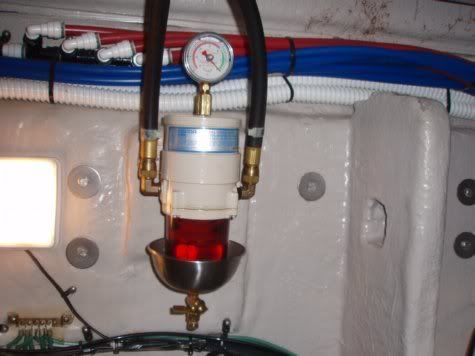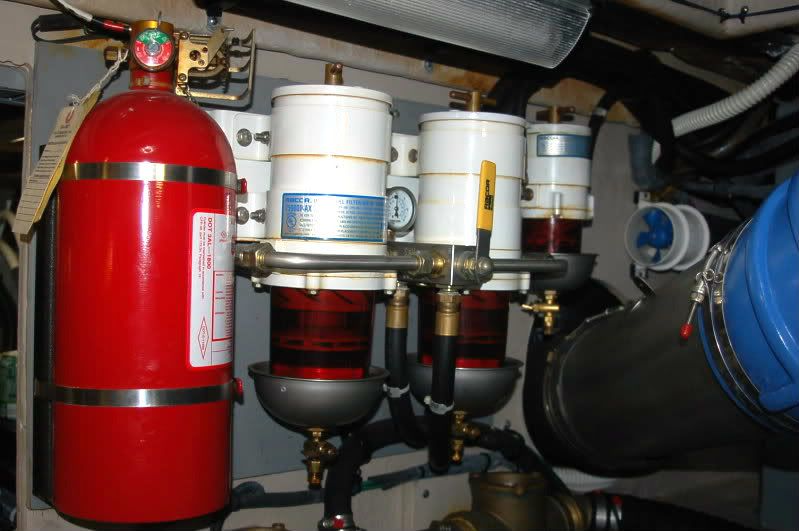Russ Calasant
Active Member
I have a few questions. If I replace the racors I assume I should replace the filter on the mains too?
I have dual racors for each main and I see a bunch of crap in the bottom bowls. They should only have 40 or 50 hours max since they were changed. The vacuum gauges appear to have a black out area top center, does this indicate the operating range? Port is reading almost to the left edge of this blacked out area on the gauge and the starboard gauge is reading in the center. Or is it just a change in reading that indicates the need to change filter? - I don't have a baseline.
A curious thought, boat is new to me and I requested the mechanic change filters but the valves are only running on one racor for each main but all four bowls are showing sediment in the bottom- should I assume they were not changed and change them regardless, I am thinking so.
Now when I change them the racors are as high or higher than the tanks so gravity will not flush out the bowl will it? Will I need to shut off the valve and pour fresh diesel through it until clean then fill to the top? Or if I crack the top and bleed the bottom will that work? Also when I replace the filter on the main, do I fill the new one with fresh fuel and screw it on or leave empty and prime it? Speaking of prime or bleeding is there a pump? And if so where?
Seems like an easy enough job, I just want to make sure I do it correctly the first time.
I appreciate any input
I have dual racors for each main and I see a bunch of crap in the bottom bowls. They should only have 40 or 50 hours max since they were changed. The vacuum gauges appear to have a black out area top center, does this indicate the operating range? Port is reading almost to the left edge of this blacked out area on the gauge and the starboard gauge is reading in the center. Or is it just a change in reading that indicates the need to change filter? - I don't have a baseline.
A curious thought, boat is new to me and I requested the mechanic change filters but the valves are only running on one racor for each main but all four bowls are showing sediment in the bottom- should I assume they were not changed and change them regardless, I am thinking so.
Now when I change them the racors are as high or higher than the tanks so gravity will not flush out the bowl will it? Will I need to shut off the valve and pour fresh diesel through it until clean then fill to the top? Or if I crack the top and bleed the bottom will that work? Also when I replace the filter on the main, do I fill the new one with fresh fuel and screw it on or leave empty and prime it? Speaking of prime or bleeding is there a pump? And if so where?
Seems like an easy enough job, I just want to make sure I do it correctly the first time.
I appreciate any input






